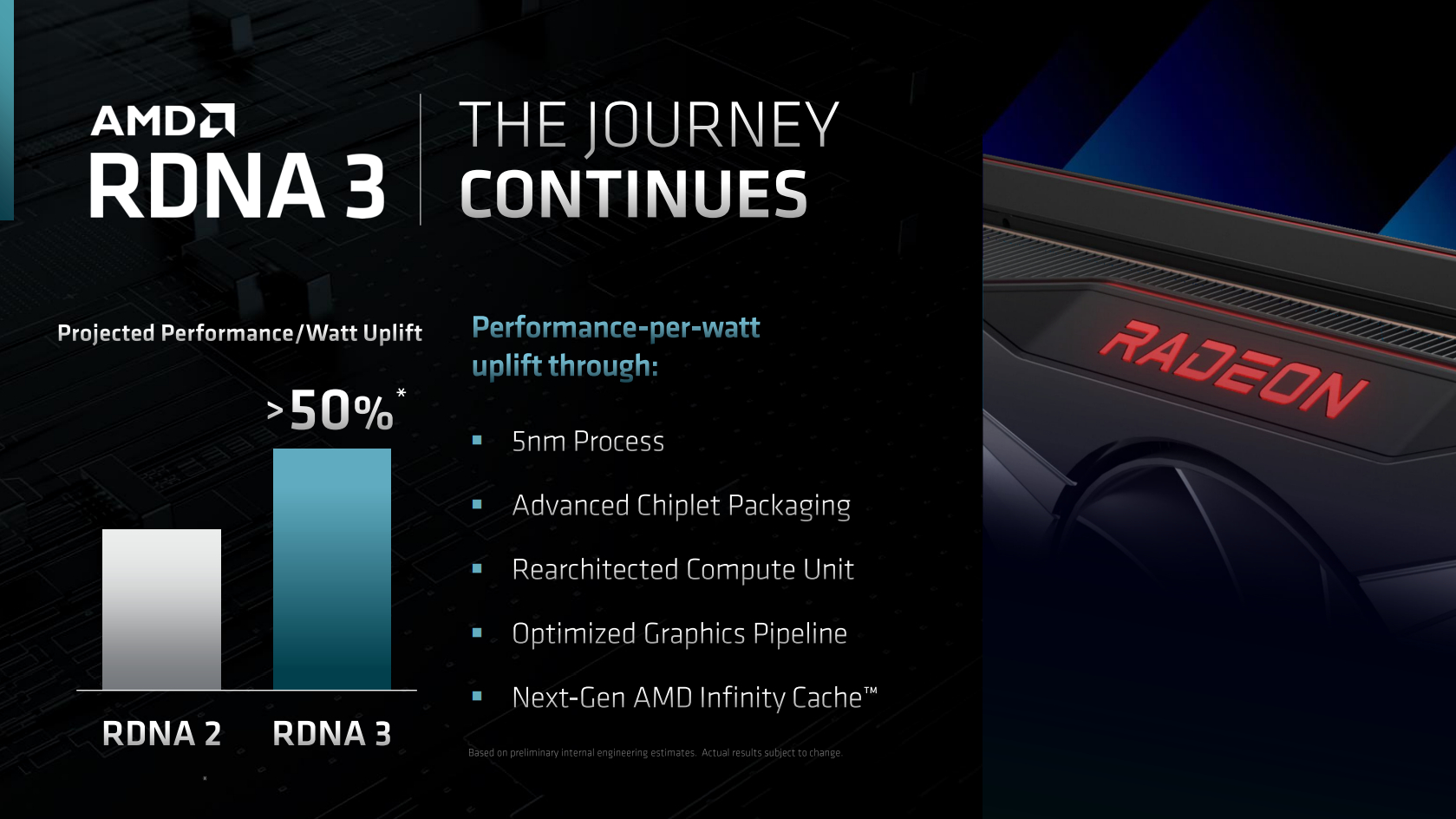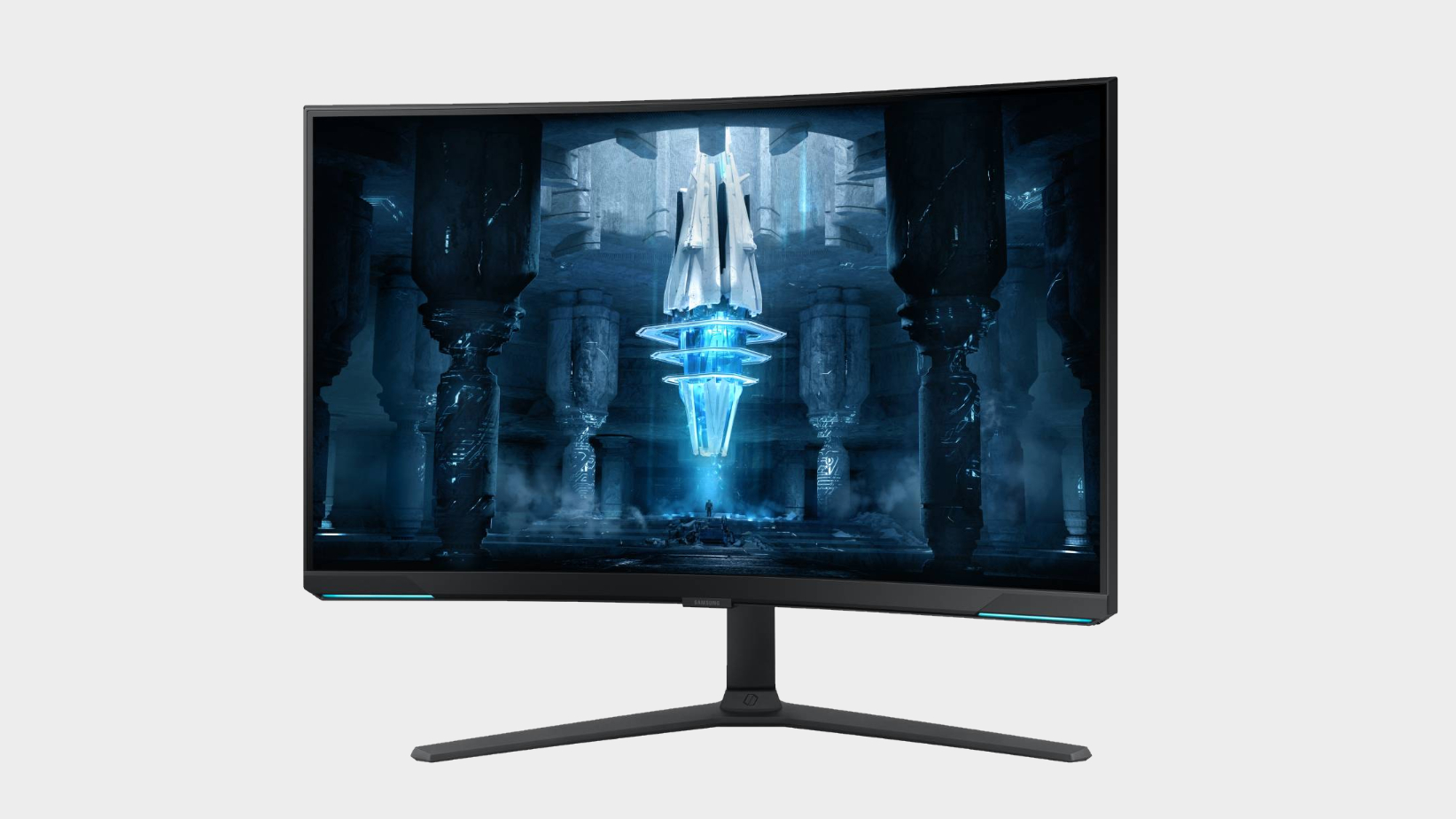AMD RDNA 3 GPUs sport next-gen ports for true 4K gaming at 240Hz
We now have confirmation AMD's next-gen Radeon RX 7000 GPUs will support DisplayPort 2.0 with 80Gbps bandwidth.

AMD has confirmed that its next generation graphics cards will support DisplayPort 2.0 straight out of the box, for all your HDR, high-res, high refresh rate gaming needs. There was already the suggestion that new graphics cards from AMD and Nvidia would support the new standard, especially as Intel has already confirmed its delayed desktop GPUs will do, but this is the first official confirmation we've had from the red team itself.
That came during AMD's VP of graphics engineering, David Wang's talk during its financial analyst day, where he went into some very light detail about the company's graphics tech going forward.
He gave us the first hints of what we can expect from the new technologies being baked into the upcoming RDNA 3 GPUs though didn't really do much more than hit a few marketing bullet points on his way down the list. Yes, we're getting chiplets "to continue to scale performance aggressively without the yield and the cost concerns of large monolithic silicon," but that's about it.
He also touched on some potential changes to the way the revised compute units, or workgroup units, function and an alteration to the graphics pipeline that might allow it to do hybrid real-time ray tracing without the performance hit you currently get on RDNA 2 silicon.
Though again, it was vague and given precious little detail.
What was concrete, however, was the confirmation of DisplayPort 2.0 support for RDNA 3 graphics cards: "We'll also augment our display capabilities with the new DisplayPort 2 standard," says Wang, "to support upcoming HDR displays with high resolutions and refresh rates."
Why is that important? Well, arguably it's not. Yet. DP 2.0 gaming monitors are still unavailable, and with Samsung already putting its HDR 2000, 240Hz 4K Odyssey Neo G8 up for pre-order without DisplayPort 2.0 connections, you could say that its potential is limited.
Keep up to date with the most important stories and the best deals, as picked by the PC Gamer team.


The Samsung screen uses Display Stream Compression to deliver a 240Hz 4K experience, despite HDMI 2.1 being theoretically limited to 144Hz at that resolution. According to its proponents it shouldn't result in any loss of colour even though it is compressed, but being able to deliver a full uncompressed stream is the real promise of DisplayPort 2.0.
With a full 80Gbps of bandwidth—compared to 48Gbps with HDMI 2.1—you have just enough bandwidth to cope with the heavy demands of a true 4K 240Hz signal. That full data stream would require around 72Gbps, almost at the very limits of even the new DP standard.
AMD support for DisplayPort 2.0 was previously hinted at in open-source driver details, and Nvidia is also widely expected to include the standard in its Lovelace generation of GPUs later this year, too. Fingers crossed we actually start to see some displays which take advantage around the same time.

Dave has been gaming since the days of Zaxxon and Lady Bug on the Colecovision, and code books for the Commodore Vic 20 (Death Race 2000!). He built his first gaming PC at the tender age of 16, and finally finished bug-fixing the Cyrix-based system around a year later. When he dropped it out of the window. He first started writing for Official PlayStation Magazine and Xbox World many decades ago, then moved onto PC Format full-time, then PC Gamer, TechRadar, and T3 among others. Now he's back, writing about the nightmarish graphics card market, CPUs with more cores than sense, gaming laptops hotter than the sun, and SSDs more capacious than a Cybertruck.

